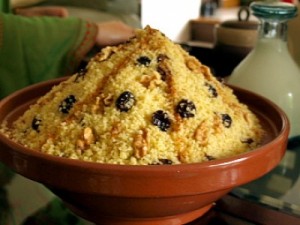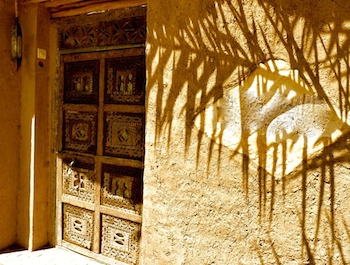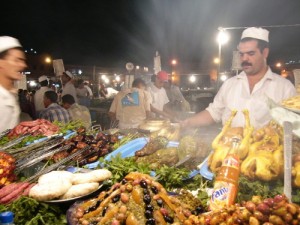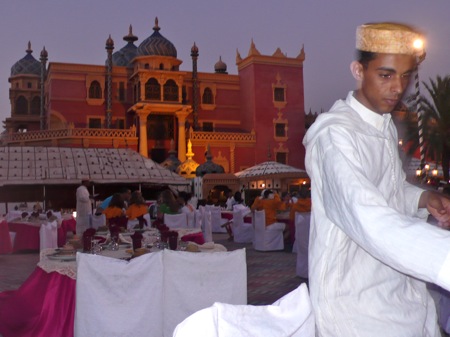Posts Tagged ‘Moroccan food’
#1: Visas are not required to enter Morocco and most Vaccinations are not necessary. If you are an American citizen, Canadian citizen or citizen of the European Union, Japan, Brazil or South Africa you can travel to Morocco visa free. To be on…
Moroccan Street Food is a great way to discover Morocco’s local culture. While the best Moroccan food is said to be found in a Moroccan home, very reasonably priced street food is available in small stalls and roadside cafés all over Morocco. Eating Moroccan Street Food in the old medina…

Moroccan food is considered some of the best in the world. The easiest way to discover the true flavors of Moroccan cuisine are to take a Moroccan cooking class or explore various restaurants in Morocco’s Imperial Cities such as Marrakech, Fes, Rabat or Essaouira on a Morocco tour. Another way to discover authentic Moroccan cuisine is to dine with a local family in a Berber Village. Berber villages are known for their unique fare as result that their main staples in making Moroccan traditional cuisine such as couscous are grown locally in their fields alongside special herbs which allows for amazingly tasteful food. Moroccan recipes such as baking bread by fire and a tajine on starlit night can be learning on a Sahara desert tour to the Erg Chebbi Dunes of Merzouga whereby your camel trekking guide takes you off on a journey into the vast dunes to a Sahara camp at sunset to learn the secrets of the Sahara. To fully enjoy a Moroccan meal one must arrive with an empty stomach and then fully prepare themselves for a three or four-course Moroccan feast. As the French proverb says, “Appetite comes with eating; the more one has, the more one would have” so make sure to visit Morocco with an open palate and a big appetite!
Morocco is a country in North Africa where people consume allot of bread, Bread is always on the table an eaten with almost every meal. Bread is fitting with the traditional cuisine of Morocco that consists of tajines, stews and soups. What’s staggering about “bread” in Morocco is that is primarily made by all women at home and often twice daily. This results in fresh and delicious breads of all kinds from flatbreads to pancakes.
Djemaa El Fna Square is in the heart of Marrakesh, Morocco is like no where else on earth, and an adventure not to be missed after dusk. Courageous travelers in Morocco will definitely want to eat in the Djemaa El Fna Square. Tourists can avoid any chance of illness simply by sticking to foods that are actually cooked in front of them, and passed over to be eaten off of a clean paper. The Moroccan family in the photo above is waiting for their main course to come out of the cooking pot in front of them.Whether you choose to eat or not, just a stroll through the Djemaa El Fna Square in the evening can provide some very unique photo opportunities.
One of the most exciting ways to spend an evening in Marrakech when touring with a Marrakech Travel Agency such as Travel Exploration is to attend the Chez Allez Fantasia Dinner Show at Al Kasbah in Marrakech’s Palmary. The Chez Allez Fantasia show at Al Kasbah is a Moroccan Travel equestrian spectacle and a must see for those who enjoy Moroccan Moroccan music and Moroccan food. In fact the Chez Allez Fantasia show is also attended by local Marrakeshi’s and Moroccans who come to Marrakech for vacation. Attending Chez Allez guarantees an Absolute Morocco experience.
Preserved lemons are a staple in Moroccan cuisine and are added to slow cooking tagines, stews, and soups for a wonderful tangy lemon flavor that can not be duplicated by fresh lemons. In Morocco, these lemons can be bought individually at a souk, or marketplace, and are very easy to…








